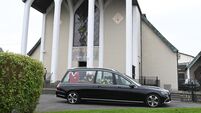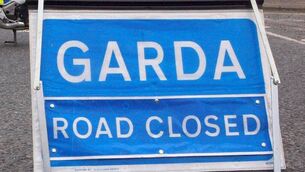Cork City Council has highest collection rate of vacant site levy

The number of sites on the vacant site register in Cork peaked in 2020 at 18 but the number has since fallen back to the current level of 13.
Cork City Council has the highest collection rate of the vacant site levy of any of the country’s 31 local authorities, according to new figures obtained from the Department of Housing.
Returns filed by Cork City Council show it has collected 60% of the money due under the levy from property owners since the initiative was introduced in 2018.
The figures show the council has taken in €922,250 from owners of vacant sites in the last four years, while €604,450 remains outstanding.
Only Dublin City Council, where properties are considerably more valuable, has collected a higher amount over the period — just under €1.5m — but its collection rate is just 7% as it is still owed over €18.7m.
Last year Cork City Council issued demand letters to the owners of seven sites in the city for payment of the levy for 2020.
It received payments in relation to three sites worth €315,875.
The council said €317,450 remained unpaid from the owners of the other four sites, although it noted the owners of two sites were appealing the inclusion of their lands on the vacant site register.
Figures show the number of sites on the register peaked in 2020 at 18 but the number has since fallen back to the current level of 13.
The most valuable vacant site is the former Coca-Cola bottling plant on the Carrigrohane Road which is owned by Strigosa and is estimated to be worth €7.5m, although it is uncertain if it will be liable for any future levy as it is the location for the development of the city’s largest student accommodation complex with over 600 student beds.
There are five other sites worth between €2m and €3m including two sites owned by the council itself in Gurranabraher and one which previously formed part of St Dominic’s retreat centre on the Middle Glanmire Road which is valued at €2.8m.
Meanwhile, Cork County Council has collected just 5% of the levy demands it has issued to date.
Revenue from the vacant site levy since 2018 has totalled just €9,750, while €183,700 is still owed.
The number of properties on Cork County Council’s vacant site registered has reduced from 32 in 2018 to its current level of 16, with the decrease explained largely by the transfer of some sites to Cork City Council following boundary changes between the two local authorities.
The council’s director of planning, Michael Lynch, said its active land management team were engaged in direct discussions with landowners regarding the collection of 43% of the outstanding debt.
Mr Lynch said the remainder would remain as a charge on the land.
He noted that the entry of sites on the register had prompted the sale of some properties which also got some owners to engage about paying outstanding levies, Mr Lynch said the council was also currently reviewing its vacant site register which he expected would result in the removal of some present entries.
The latest figures also revealed that more than half of the country’s 31 local authorities have not collected a single euro of the vacant site levy since it was introduced four years ago.
They also highlight how only 8% of the money due for payment under the levy last year was collected by local authorities.
An analysis of reports submitted by local authorities last month to the Department of Housing on their performance in administering the levy shows just under €1.3m was collected during 2021, although owners of vacant sites were liable to pay an estimated €17m.
The report also highlights the low collection rate of the levy since it was first liable for payment in 2019 with less than €4m being paid to date with local authorities estimating that another €37.2m should be due for collection.
However, councils accept that some of the outstanding money will not be paid due to appeals, changes of ownership, and development of the lands.
So far this year, just €64,295 has been collected as a result of notices totalling around €11.4m issued in relation to the 2021 levy.
The reports obtained under freedom of information legislation show only 14 local authorities have collected any money due from the vacant site levy over the past four years.
The annual levy which became effective for appropriate vacant sites in 2018 empowered local authorities to apply a 3% rate on the market value of the site, which increased to 7% from 2019.
The vacant site levy is due to be replaced by the new Residential Zoned Land Tax which is due to come into effect in early 2024.













